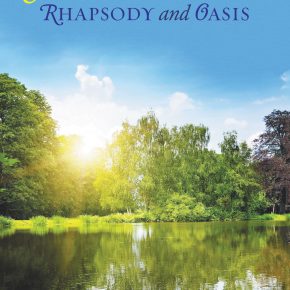Book Review – Central Park: Rhapsody and Oasis by Eve J. Blohm
Review by JD DeHart
Eve J. Blohm’s poetry collection, Central Park: Rhapsody and Oasis, offers up its central dichotomy as early as the title page. This is a collection of poems that finds the oasis of nature, the rhapsody of contemplation, within an urban landscape. Blohm’s poems push us into the mind and heart of nature contained in a cityscape.
Two features struck me as I read this collection. First, I noted the way Blohm has included works from the past and the present. She helpfully includes the dates for many of her poems, and this dating of the works served as a kind of biography in verse. I was somewhat envious that I had not thought to do this with my own work over the years, noting those pieces from years ago and those more recently penned.
The second notable feature is the sheer variety of poems offered in the collection. Some collections offer a slim volume, scatterings of verses that might or might not be found elsewhere online, giving the effect of having been written in an idle afternoon. But Central Park: Rhapsody and Oasis includes well over one hundred pages of verse, and these poems range from prose poetry to haiku to sonnets. There are longer pieces that provide elaboration and shorter ones that do their work quickly.
Many of Blohm’s poems work first as descriptions. Consider these lines from “Park Life,” the first poem you will encounter as you read: “A sparrow is all alone in the park. There are leaves, acorns, chestnuts and twigs on the ground.” What Blohm does next is offer us not just a description, but dives below the surface of what she has seen to offer us reflective insight and a deeper meaning: “The path has shadows of loss, loneliness and sadness.” Suddenly we are transported beyond the pastoral description of creatures and elements of the park into an inner life of memories. We are not only provided with an appreciation of flora and fauna, but we are granted a pass into the author’s reflections evoked by these encounters.
Blohm’s haiku sequences offer a similar pairing. Images of the people, joggers and street artists, find juxtaposition with summer landscapes. My mind traveled back to my own brief travels in New York, and the effect was a desire to go back and – this time – notice a little bit more.
Perhaps my favorite poem in the collection is “Solace,” a poem which begins with a description of a vase, but then expands and unfolds to explore the park path, the skyline, and the mountains. Again, Blohm moves beyond description here to talk about an inner life of memory that serves as the central element of the poem.
There is nothing abrasive here; even descriptions of the homeless are accomplished with a sense of beauty. This is the contemplation and quiet of a Robert Frost poem nestled in the activity of a Carl Sandburg urban meditation. This a collection that spans time, offering a reflection of an artist’s experiences not just in a brief period, but through decades.
When I read someone’s work, I am always grateful for the opportunity and I was no less grateful in reading Blohm’s verse, and for her willingness to share so much of her life through the lines of her poems.

